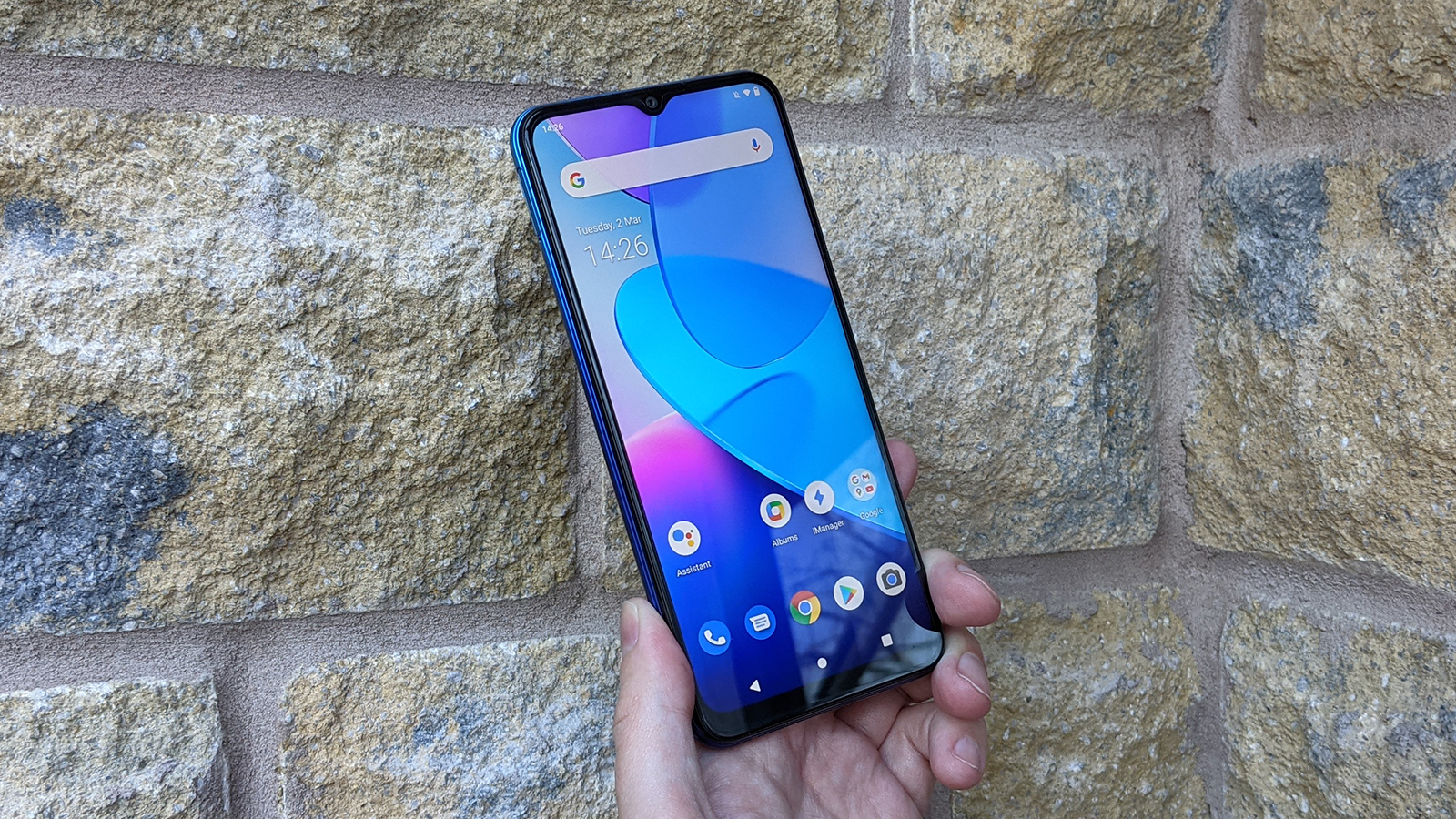Vivo Y20s review: a super-cheap Android phone with long battery life
The Vivo Y20s is one of the most affordable phones around, but does it offer value for money?

The Vivo Y20s is a phone for those shopping on a budget, and if you want to spend as little money as possible and still get a phone that works, it's worth considering – just be aware of everything that Vivo has cut out to make the Y20s hit this particular price point.
-
+
Very affordable
-
+
Stylish back panel
-
+
Long battery life
-
-
Low resolution screen
-
-
Poor low light camera performance
-
-
Low spec components
Why you can trust T3

With the ultra-cheap Vivo Y20s, Vivo continues its expansion into the UK (see also the Vivo X51 5G, a more premium-level device). It's a 6.51-inch Android handset that you can get for not much money at all, and which covers all the basics you need from a smartphone.
If you're in the market for one of the best cheap phones available right now, then this is a handset worth considering: its affordability is just about its only stand out feature, but it is very affordable, and only a fraction of the price of the top-end flagships you can buy.
The Vivo Y20s does make some compromises along the way to reach that price point, but certain trade offs aren't as drastic as you might think. In our full review we'll explain everything you need to know about the phone, from camera quality to battery life.
Vivo Y20s review: price and availability
The Vivo Y20s is out now and available to buy in the UK, unlocked and SIM-free, from retailers including Box, Ebuyer, and LaptopsDirect. Check the widgets embedded on this page for the latest online deals, but you can typically pick up this smartphone for less than £150, making it one of the cheapest handsets around.
Vivo Y20s review: design and screen


The 6.51-inch, 720 x 1600 pixel LCD screen that the Vivo Y20s comes with is perfectly fine without being close to dazzling: you won't mistake this for a premium OLED display. The 720p resolution is a little disappointing, but it does the job for watching movies, browsing the web, and flicking through photos. Note that there's no HDR here, so photos and videos won't be quite so well balanced in terms of their dynamic range.
The bezels around the display are acceptably thin, and there's a teardrop notch up at the top of the screen. Otherwise, the Vivo Y20s looks reasonably stylish while also looking a little on the cheap side – the gradient shimmer sort of effect on the plastic back adds a touch of class, while overall the phone feels light and thin in the hand. It certainly won't weigh down your pocket or your bag.
Your colour choices are Nebula Blue (like our review model) and Obsidian Black, and we like the aesthetics of both of them. While coming a long way short of the levels of polish and style you get on flagship or even mid-range devices, the Vivo Y20s doesn't embarrass itself in terms of design. The rectangular camera bump is quite pronounced, but that's now common across a lot of handsets.
Get all the latest news, reviews, deals and buying guides on gorgeous tech, home and active products from the T3 experts
It's a shame that the VIvo Y20s sticks with the ancient microUSB technology for its charging and data port, which means you're still going to have to keep at least one of these cables around while everything else has long since moved to USB-C. The phone also puts the fingerprint sensor in the power button, which we find a bit on the fiddly side – your mileage may vary. There's also a 3.5 mm headphone jack on the bottom of the phone.
- Our picks for the best cheap phones currently available
Vivo Y20s review: camera and battery

Considering the low, low price of the Vivo Y20s, we weren't expecting much from the rear camera on the phone when we took it out for some testing. The resulting photos and videos actually aren't all that bad, and unless light is a problem or you're trying to snap something that's moving quickly, you can get reasonably good shots – balanced colours, on the whole, and a respectable amount of detail too.
Specs-wise, we've got a triple-lens 13MP wide + 2MP macro + 2MP depth camera on the back of the Vivo Y20s, and an 8MP selfie camera on the front. There's no ultrawide mode here, and no optical zoom, though the digital zoom works better than we expected it to (up to a 2x zoom level, anyway). As an everyday photo snapper, the Vivo Y20s just about does enough to keep most people happy.









Low light is a bit of a problem, as you would expect from the specs we've listed and a lack of night mode in the phone's software setup. In really low light you won't get much of a photo back at all, and even if you do, blur and noise are noticeable (this is a long way short of the low light performance of the Pixel 4a, for example). If you want to be able to take photos and videos in any setting or situation, it might be worth spending a little bit more; if camera quality isn't much of a priority, you'll be okay with the Vivo Y20s.
Battery life, meanwhile, is one of the highlights of the Vivo Y20s: the 5,000 mAh battery built into this handset is easily going to last you an entire day and may even get you through two if you don't push it too hard – it's that good. Our two-hour video streaming test, at maximum brightness, knocked the battery down from 100 percent to 84 percent, which equates to around 12-13 hours of video watching overall. There's no wireless charging option though, and wired charging tops out at 18W.
- These are the best gaming phones available now
Vivo Y20s review: other specs and features

The Vivo Y20s runs on a very modest Qualcomm Snapdragon 460 processor, which is combined with 4GB of RAM and 128GB of internal storage (which you can expand via a microSD card if you want to). Those are pretty low level specs, and while the phone is perfectly usable, you will notice slight delays in keyboards, menus and webpages opening up as you navigate around it. It's a phone that forces you to go at a steady pace.
While casual mobile gaming is fine on the Vivo Y20s, more demanding titles can stutter and drop a few frames – there wasn't anything we could find in the Google Play Store that wouldn't run on the phone, but performance glitches do creep in when the handset is really being pushed hard. Low Geekbench 5 benchmarking scores of 252 (single-core), 1232 (multi-core) and 264 (OpenCL) back that up. To be fair, that's similar to other ultra-budget Android phones.
These are performance trade-offs that you might be perfectly willing to make for getting a phone that costs so little, but you definitely need to be aware of them if you're thinking about purchasing the Vivo Y20s. It's also important to note that the phone doesn't offer 5G connectivity – definitely not a surprise at this price, but it's now becoming less and less common to find a new phone that doesn't offer more than 4G.
On the software side, the phone runs Android 10 together with a skin that Vivo calls Funtouch. It's not bad, as far as Android skins go, and there isn't much in the way of unnecessary bloatware – a rather superfluous system management utility, a gallery app, an FM radio app, an app that's just a link to the Vivo website, and TikTok for some reason. Android 11 would be nice, but we've got no major software complaints.
- All the best 5G phones are listed right here
Vivo Y20s review: price and verdict

The Vivo Y20s is only really going to interest people who want to spend as little as they possibly can on a new smartphone, and in terms of affordability the phone is a five-star success. Whether it's better value for you than getting an older, second-hand mid-range or flagship phone is less easy to say, but if you like the look of the Vivo Y20s then it's not going to put a massive dent in your bank balance.
The other big plus point here is the battery life, which is well above average and can quite possibly stretch to two days in some situations. We were impressed by just how long the Vivo Y20s lasted in our testing, and if you're looking for an inexpensive second phone that you can keep in a drawer for days on end then the Vivo Y20s would definitely fit the bill. It might also suit older or younger users who aren't too demanding when it comes to what they want from their smartphone.
On the one hand, the price that Vivo is offering this phone at is fantastic, and it will run all the apps you rely on to a satisfactory level. At the same time, the phone is a touch slow at times, and the screen and the design aren't particularly impressive either. There's no wireless or fast charging here, no 5G, and no waterproofing, and if your budget can stretch a little bit higher then you can pick yourself up a mid-range phone that's a lot better.
Assessing any smartphone means taking the price into consideration and weighing that against everything else, and in terms of value for money we think that Vivo has done a good job here – in smartphone terms this costs peanuts, and yet it holds up okay in all the key areas. There are a lot of compromises made by Vivo though, and we think most people would be better off saving up for a more expensive handset.
- These are the best small phones you can buy now
Dave has over 20 years' experience in the tech journalism industry, covering hardware and software across mobile, computing, smart home, home entertainment, wearables, gaming and the web – you can find his writing online, in print, and even in the occasional scientific paper, across major tech titles like T3, TechRadar, Gizmodo and Wired. Outside of work, he enjoys long walks in the countryside, skiing down mountains, watching football matches (as long as his team is winning) and keeping up with the latest movies.
